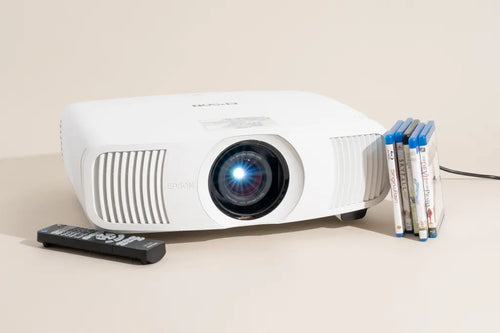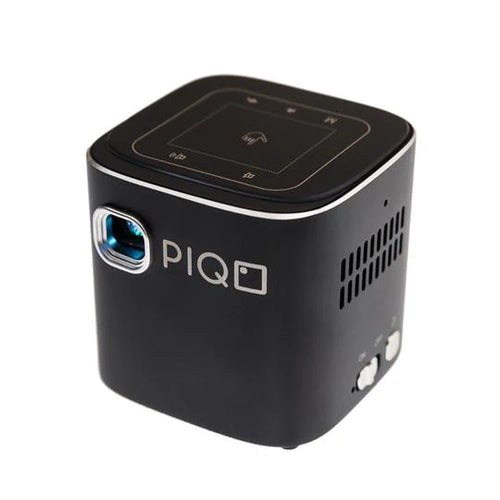Shine the Spotlight: How to Set Up a Stage Projector for Show-Stopping Performances!

When it comes to stage productions, lighting, and projections play a crucial role in creating a captivating and immersive experience for the audience. From setting the mood to highlighting key moments, the coordination between lighting and projections can truly make a performance shine.
In this article, we will explore the technical aspects of integrating lighting and projection systems, how to set up a stage projector like Piqo for show-stopping performances, and much more. Let’s dive in!
The Impact of Lighting on Projection Design
Lighting and projection design go hand in hand to create stunning visuals on stage. The careful use of lighting can enhance the projections and bring them to life. One important factor to consider is the color temperature of the light. Different color temperatures can dramatically change the appearance of projections.
For example, warm light can create a cozy and intimate atmosphere, while cool light can convey a sense of mystery or drama. By experimenting with different color temperatures and angles, lighting designers can effectively enhance the impact of projections.
Coordinating Lighting and Mini projector for iPhone and Android for a Seamless Experience
Coordinating lighting and projections to create a seamless experience requires careful planning and execution. Here are some steps you can follow to achieve this:
1. Conceptualize the Experience
Start by determining the overall theme and mood you want to convey through lighting and projections. Consider the purpose of the event or installation and the emotions you want to evoke in your audience.
2. Collaborate with Designers
Work closely with lighting and projection designers to develop a cohesive vision. Discuss your ideas, share references, and explore different possibilities together. This collaboration will ensure that both aspects complement each other effectively.
3. Create a Lighting and Projection Plan
Develop a detailed plan that outlines the key moments and transitions where lighting and projections will be synchronized. Identify specific cues or triggers that will be used to initiate these changes. This plan will serve as a blueprint for the technical implementation.
4. Use Integrated Control Systems
Invest in an integrated control system that allows you to synchronize lighting and projection cues seamlessly. This could be a software-based system that can communicate with both the lighting console and the projection mapping software.
5. Test and Rehearse
Prior to the actual event or installation, conduct extensive testing and rehearsals. This will help identify any technical issues or timing discrepancies that need to be addressed. Adjust the cues, transitions, and timing as necessary to ensure a smooth and synchronized experience.
6. Fine-tune the Design
During rehearsals, evaluate the impact of the lighting and projections on the overall experience. Make adjustments to the intensity, color, positioning, and content of the projections to enhance their integration with the lighting design.
7. Consider Venue Constraints
Take into account the limitations and constraints of the venue. Understand the available lighting fixtures, their capabilities, and any restrictions that may affect the projections. Adjust your design accordingly to optimize the use of available resources.
8. Communication and Collaboration
Foster open communication and collaboration between the lighting and projection teams during the implementation phase. Regularly review and refine the coordination between the two elements to ensure a seamless experience.
9. Document and Share Knowledge
Keep a record of the lighting and projection cues, settings, and configurations used for future reference. This documentation will be valuable if you plan to recreate or adapt the experience in different settings.
10. Iterate and Improve
After the event or installation, gather feedback from the audience and team members involved. Analyze the effectiveness of the coordination between lighting and projections and identify areas for improvement. Use this feedback to refine your approach and enhance future experiences.
Understanding the Technical Aspects of Lighting and Projection Integration
Lighting and projection integration combines lighting and projection systems to create visually immersive and dynamic experiences. It involves synchronizing the lighting fixtures and projectors to enhance the overall visual impact of a space or an event. Here are some technical aspects to consider when integrating lighting and projection:
Control Systems
Lighting and projection systems typically require advanced control systems to synchronize their operation. These control systems can be hardware-based or software-based, allowing for precise control over various parameters such as color, intensity, timing, and effects.
Projection-Mapping
Projection mapping is a technique that involves mapping video content onto irregular surfaces or objects. It allows for the precise alignment of projected visuals with the physical environment. The integration process involves calibrating the projectors and adjusting the projection parameters to ensure accurate mapping and seamless blending between lighting and projected content.
DMX Integration
The DMX (Digital Multiplex) protocol is commonly used for controlling lighting fixtures. Integration with projection systems may involve using DMX-controlled projectors or converting DMX signals to protocols compatible with projectors. This allows for unified control of both lighting and projection systems through a single DMX control console.
Fixture Placement and Selection
Proper placement and selection of lighting fixtures are crucial for effective integration with projection. Consider the throw distance, beam angle, and coverage area of the fixtures to avoid unwanted shadows or interference with projected content. Different types of fixtures, such as spotlights, wash lights, and LED strips, can be strategically positioned to enhance the projection effects.
Color Matching
Achieving consistent color rendering between lighting and projected content is important for seamless integration. This requires careful calibration of the lighting fixtures and projectors to ensure color accuracy and consistency across the entire visual space.
Content Creation and Management
Integration of lighting and projection involves creating and managing the content that is displayed. This includes designing or sourcing video content, images, animations, or dynamic visual effects that complement the lighting design. Content management systems allow for scheduling, playback, and synchronization of the visuals with the lighting cues.
Testing and Calibration
Rigorous testing and calibration are necessary to ensure optimal performance and synchronization. This involves fine-tuning the lighting and projection systems, adjusting parameters, and conducting test runs to verify the integration's overall effectiveness.
Maintenance and Troubleshooting
Regular maintenance and troubleshooting procedures should be in place to keep the integrated lighting and projection systems running smoothly. This may include lamp replacements, cleaning optics, updating software/firmware, and addressing any technical issues that may arise.
Setting Up a Pocket Projector for Show-Stopping Performances
Setting up a stage projector for show-stopping performances involves several key steps. Here's a guide to help you with the process:
1. Determine Your Requirements
Start by understanding the specific needs of your performance. Consider factors such as the size of the stage, the desired projection area, the content to be displayed, and the overall ambiance you want to create. This will help you select the appropriate projector and accessories.
2. Choose the Right Projector
Select a projector that suits your requirements in terms of brightness, resolution, throw distance, and connectivity options. Consider the ambient lighting conditions in the venue to ensure the projector's brightness is sufficient for clear visibility.
3. Positioning the Projector
Set up the projector in a suitable location. Ideally, it should be placed on a sturdy mount or stand, ensuring it is secure and stable. Consider the throw distance and angle required to achieve the desired projection size and clarity. Use the projector's zoom and focus adjustments to optimize the image.
4. Screen Selection
Decide on the type of projection screen you'll be using. Options include portable screens, fixed screens, or projection surfaces like walls or fabrics. Ensure that the screen size matches the projection area you've planned.
5. Connectivity and Content
Connect your content sources, such as a computer, media player, or video mixer, to the projector. Ensure you have the necessary cables, adapters, or wireless connectivity options. Test the connectivity and verify that the content is being correctly displayed on the screen.
6. Adjusting Image Settings
Use the projector's on-screen menu to adjust image settings such as brightness, contrast, color temperature, and aspect ratio. Calibrate the projector to ensure accurate colors and sharpness.
7. Projection-Mapping and Effects
If you're planning to incorporate projection mapping or special effects, use appropriate software to map the projection onto specific objects or surfaces. Experiment with different effects and configurations to enhance the visual impact of your performance.
8. Test and Rehearse
Before the actual performance, conduct thorough testing and rehearsals. Verify that the projected images are aligned, sharp, and properly scaled. Make any necessary adjustments to ensure a seamless performance.
9. Lighting Considerations
Coordinate the stage lighting with the projected visuals. Adjust the intensity, color, and positioning of the stage lights to complement the projected content. This synchronization can create a more immersive experience for the audience.
10. Backup Plan
Always have a backup plan in case of technical issues. Keep spare bulbs, cables, and connectors handy. Additionally, it's helpful to have a backup projector or an alternative method to deliver the content, such as using multiple projectors or displays.
Conclusion
Coordinating lighting and projections are crucial for creating captivating and immersive stage productions. The impact of lighting on projection design cannot be overstated, as it greatly enhances the visual impact of the performance.
Understanding the technical aspects of lighting and projection integration and following the proper steps for setting up a stage projector will help ensure show-stopping performances that leave a lasting impression on the audience. With careful planning, collaboration, and attention to detail, the stage can shine with lighting and projection magic.






